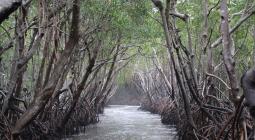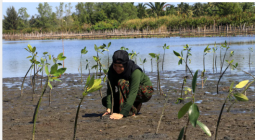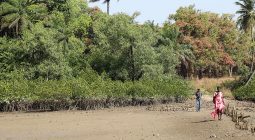Green growth: the save-the-mangrove scheme reaping rewards for women in Kenya.
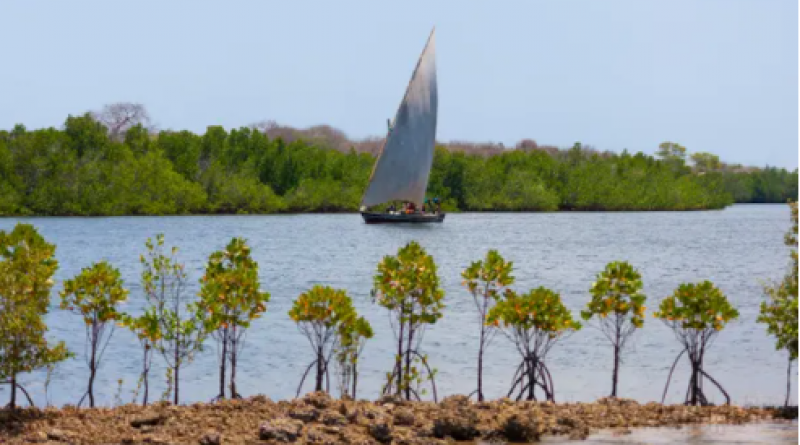
A community project on the Lamu archipelago trains women in preserving this vital ecosystem and provides business loans.
Kenya’s mangroves have been harvested for centuries, the timber used in shipbuilding and for ornate doors and furniture as well as shipped across the Indian Ocean and around the world.
The Lamu archipelago accounts for more than half of Kenya’s mangrove forests. But across the country an estimated 40% of this precious commodity has been degraded, as more mangroves have been cut to provide construction materials and charcoal for cooking, and oil leakages from cruise liners and ships that pass along the coast kill off young saplings. The area has become one of the most degraded marine ecosystems in east Africa.
Now the region’s women are spearheading a simple yet effective mangrove conservation effort.
Conservation organisations and women’s groups have come together in a project that offers women loans of $250 (£175) each, repayable in 10 months, to open small businesses. The women then qualify for larger loans.
In return, women must undergo training on mangrove restoration and conservation, offered by the Kenya Forest Service and other partners. They learn about different mangrove species as well as how, where, and when to plant them.
This is how Zulfa Hassan, a 37-year-old mother of four, came to own a small eatery in Mtangawanda village in Lamu Island.
“We were also trained on how to monitor the destruction of mangroves,” says Hassan, who has since trained her colleagues in the Mtangawanda Mangrove Restoration Women Group.
Another draw for Lamu women is the provision of bottled liquefied petroleum gas (LPG) – to wean people off using firewood and charcoal for cooking at home, which has contributed to the degradation of the mangroves.
“We are not just being gifted with gas for cooking,” says Hassan. The group had to save money through a microfinance scheme.
The 20 original members of the group managed to collectively save $190 (£130). This qualified each to take out a loan to buy a 3kg cylinder of bottled LPG, repayable at a nominal rate of $2 a month.
Mangroves play an important role in carbon sequestration, storing up to 10 times more carbon a hectare than terrestrial forests.
But, says Kipkorir Langat, principal scientist at the Kenya Marine and Fisheries Research Institute: “When you look at other benefits associated with mangroves, such as in the fishery sector – they provide breeding grounds for fish, as well as biodiversity and ecotourism – you will appreciate that the mangrove ecosystem provides more than just carbon storage.
“We have what we call ‘the multiple-use potential of ecosystems’,” he says, explaining that mangroves play an important role in carbon credit schemes, as well as acting as buffers against tsunamis.
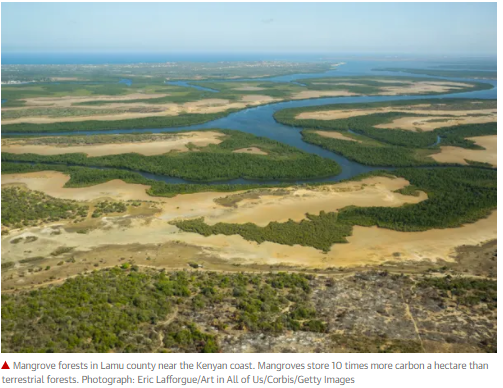
“In the absence of mangroves, a seawall will need to be constructed, which is costly,” says Langat.
It is estimated that mangroves contribute $15tn (£10.5tn) a year to the global economy, according to Langat, who says they are key to conservation in Kenya.
Community involvement was previously not a priority in managing the country’s forests. “Forests were just government business,” says James Mwang’ombe, head of forest health and biodiversity conservation at the Kenya Forest Service.
“Since these communities are participating in the management of mangroves, they should also be allowed to get something out of what they are doing,” he says.
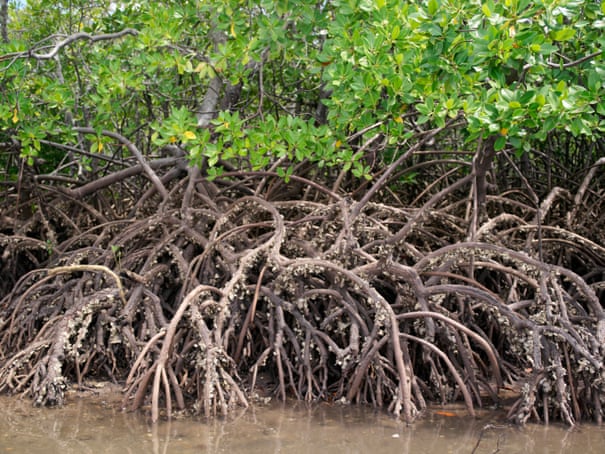
The project is having additional benefits. Members of the Mtangawanda Mangrove Restoration Women Group are venturing into other businesses.
Controlled mangrove harvesting provides construction materials, which the women can sell. The restoration of mangroves has also brought the recovery of marine breeding grounds.
Members also hope to start a carbon credit project.
With the help of the Kenya Red Cross Society, each member was given fish traps, solar panels and a solar battery for their homes, and the group were given a fridge for storing fish.
“Fish and crabs have returned, something which has helped augment our earnings,” says Hassan.
“We sell the fish at 150 Kenya shillings [£1] per kilo, out of which 30 shillings [20p] goes into the group’s savings and the rest is for personal use.”
May 2021
The Guardian

